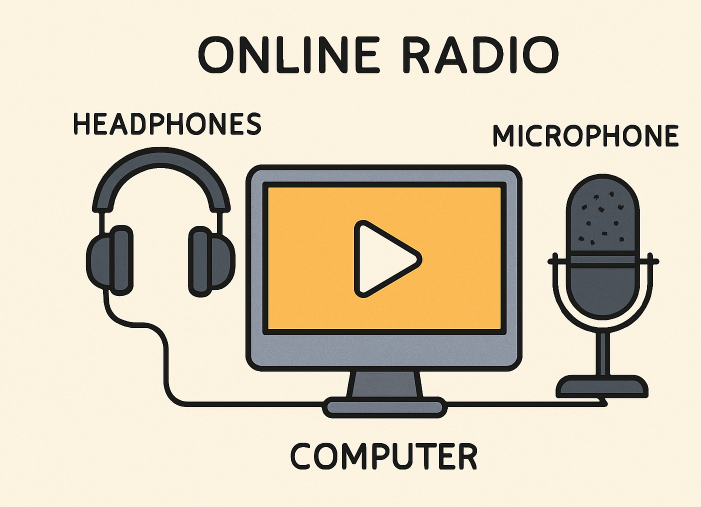Introduction
Launching an online radio station offers a unique opportunity to reach a global audience, share your perspective, and curate a musical experience that sets your station apart. With the proper roadmap, you can take your passion from concept to a fully operational online broadcast. If you’re wondering how to start a radio station for free, you’ll discover actionable steps and valuable resources here to guide your launch and growth.
Establishing a station involves more than just a playlist—with strategic planning, technical know-how, and a focus on audience engagement, you can create a thriving platform for music, talk shows, news, or whatever format fits your vision. Online radio stations have far fewer barriers to entry than traditional FM and AM broadcasts, making them perfect for creators and entrepreneurs.
This step-by-step guide covers every aspect, including crucial licensing requirements, technical setup, and the best ways to engage and grow your audience. Whether you’re a hobbyist or aiming for a commercial endeavor, the process is accessible if approached methodically, leveraging modern broadcasting solutions and proven promotional techniques.
Focusing on both the creative and technical sides can ensure high-quality broadcasts and foster a loyal listener community. As you explore the steps outlined in this guide, you’ll find reputable resources and practical advice to keep your station compliant, resilient, and innovative.
Key Takeaways
- Understand the necessary equipment and software for broadcasting.
- Learn about music licensing requirements to ensure legal compliance.
- Discover practical strategies for promoting your station and building an audience.
Equipment and Software
Getting started begins with assembling the right tools. You’ll need a reliable computer, a quality microphone (such as a USB condenser mic), headphones, and a stable internet connection. Broadcasting software is also essential. Popular solutions like RadioKing and SAM Broadcaster provide complete platforms that integrate automation, scheduling, recording, and live broadcast capabilities.
Choose equipment that suits your budget, but don’t compromise on the essentials—a clear, consistent audio feed is key to a professional-sounding broadcast. Consider investing in a mixer for multiple audio sources if you plan to host interviews or live performances. For more technical insights, check out this overview from Broadcasting & Cable.

Music Licensing
Music licensing can be a complex aspect of running a station, but avoiding hefty fines or shutdowns is necessary. In the U.S., performing rights organizations such as ASCAP, BMI, and SESAC provide streaming licenses to cover the majority of commercially released music. You’ll need to contact these organizations individually or use an aggregator that handles licensing to ensure all your broadcasts are legal.
Don’t overlook international listeners—licensing requirements differ by territory. Research the legal landscape if you plan to stream globally. ZenBusiness’s guide to starting a radio station provides more details on how these organizations operate and offers helpful guides.
Content Creation
Content sets your station apart. Diversify your schedule with live shows, pre-recorded mixes, interviews, and segments focused on niche interests. Inviting guest speakers or featuring up-and-coming local artists gives your station a fresh perspective and can help build community connections. Planning your content enables a smooth workflow and consistent publishing standard.
Develop signature segments (such as themed hours or genre spotlights) to keep your programming engaging and encourage regular tune-ins. Content variety sustains audience interest and helps gather feedback on what resonates most.
Promotion Strategies
To grow your station, leverage both digital and offline channels. Social media platforms such as Instagram, Twitter, and Facebook are vital for promoting your broadcasts, sharing behind-the-scenes content, and interacting with listeners in real time. Consistently engaging posts—teasers, polls, and show announcements—build anticipation.
List your station in online directories like TuneIn and Streema to reach listeners seeking new content. Joining relevant music or genre communities, both online and locally, can spark word-of-mouth growth. Collaborations with podcasters, bloggers, or influencers in your niche further extend your reach.
Monetization Options
As listenership grows, multiple paths to monetization become viable. Selling ad slots is one established route, but brand sponsorships aligned with your audience’s interests can be even more lucrative. Listener-supported models, such as Patreon or one-off donations, allow fans to support your efforts directly, fostering loyalty.
Explore affiliate marketing, promote branded merchandise, or offer premium content for paying members. Find a monetization strategy that blends well with your broadcast style and audience expectations—each approach has its own balance of revenue and listener experience.
Legal Considerations
Beyond music rights, familiarize yourself with your region’s copyright law and broadcasting regulations. Privacy guidelines, advertising standards, and age-appropriate content policies may also apply. Consulting with a legal advisor ensures you avoid costly mistakes and safeguards your operations from unforeseen liabilities.
Ensure you clearly communicate your terms of service, privacy policies, and any disclaimers on your station’s website or streaming interface to comply with regulations and build trust among listeners.
Technical Setup
A robust technical foundation ensures broadcast reliability. After selecting your software, configure your audio sources, set encoding preferences (MP3 or AAC), and connect to a streaming server. Many cloud-based broadcasting services offer round-the-clock support, regular backups, and analytics dashboards.
Stress-test your systems before going live, and schedule regular maintenance to avoid downtime. Keep your software updated and maintain backups of all essential settings and media.
Engaging Your Audience
Active audience engagement transforms passive listeners into a vibrant community. Create opportunities for feedback—enable live call-ins, social media comments, or music request lines. Host Q&A sessions or interactive game segments to encourage participation.
Foster a community with dedicated listener groups on platforms like Discord or Facebook, where fans can connect and discuss shows. Recognize loyal listeners with shoutouts, giveaways, or exclusive content; you’ll turn casual visitors into long-term advocates for your station.
Starting an online radio station is rewarding and attainable. With careful planning, creative programming, and a commitment to compliance and engagement, you can build a dynamic station that resonates with listeners and carves out its space in digital broadcasting. Please visit my site, Itbetterthisworld, for more details.

